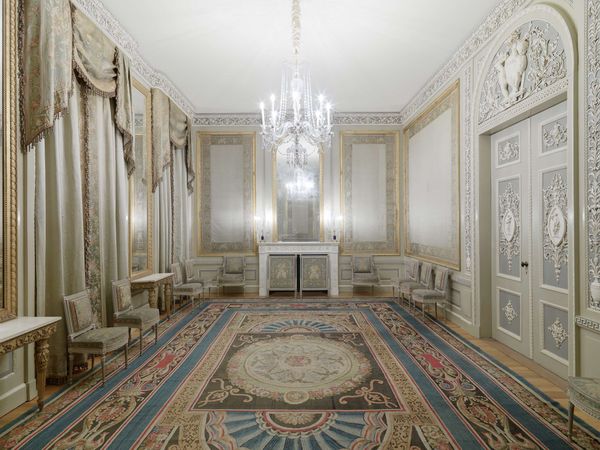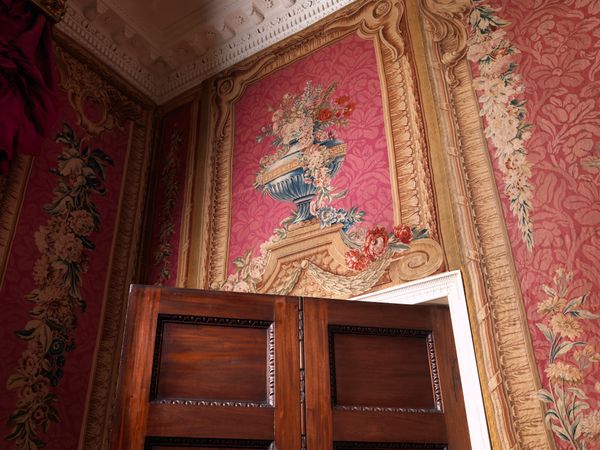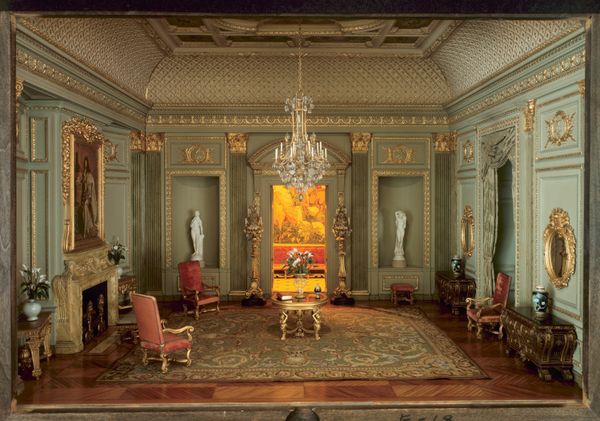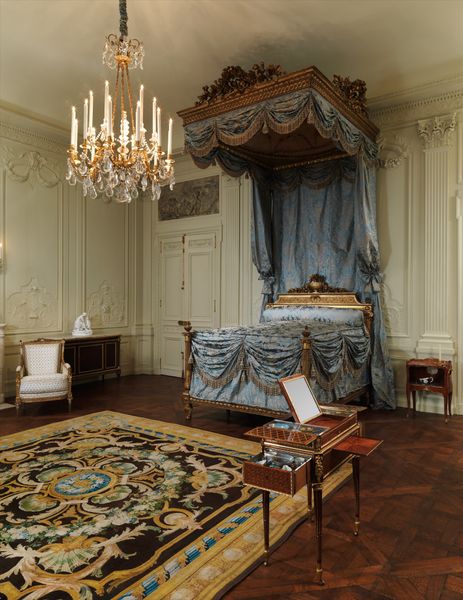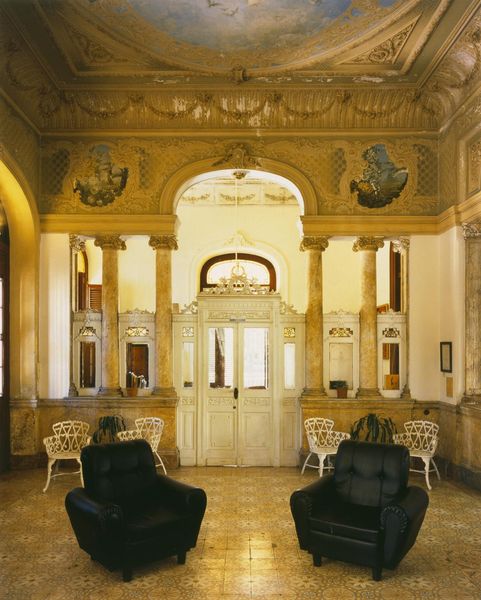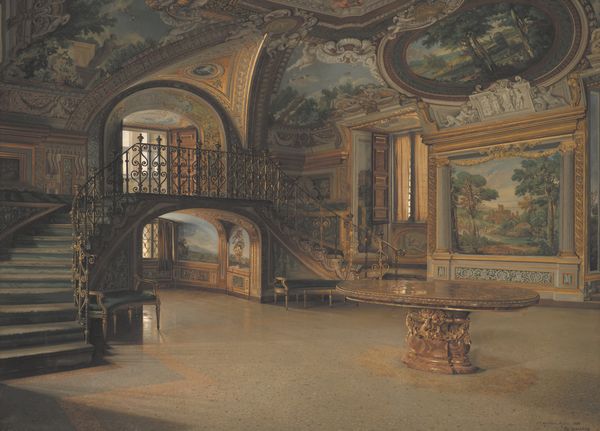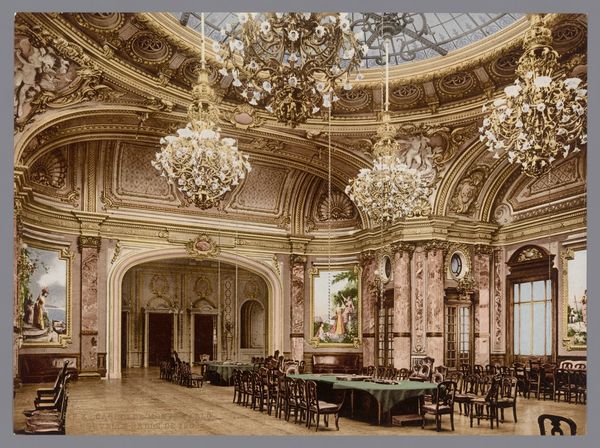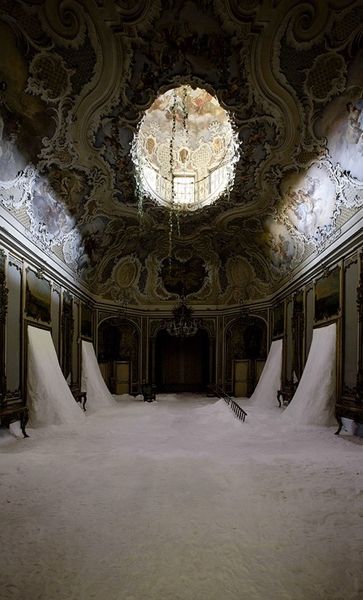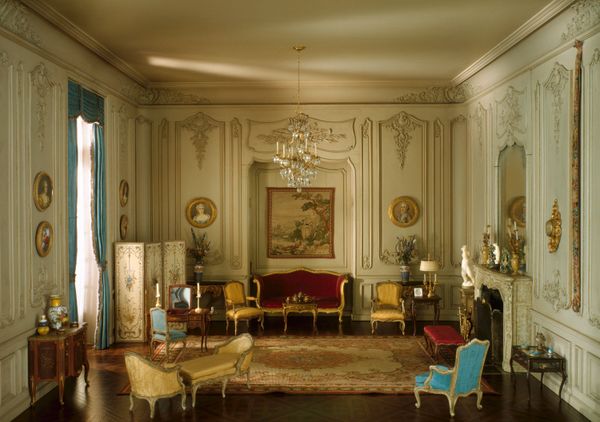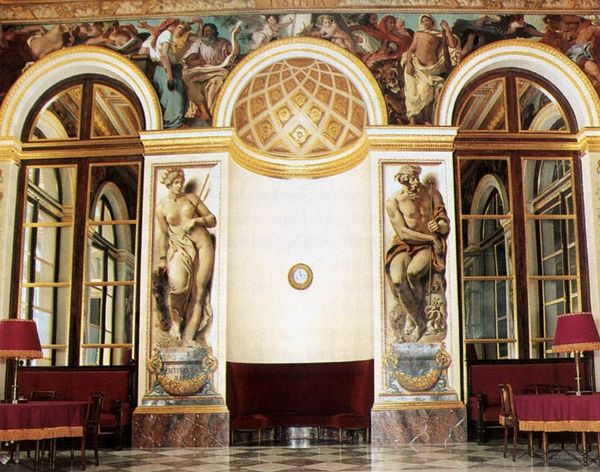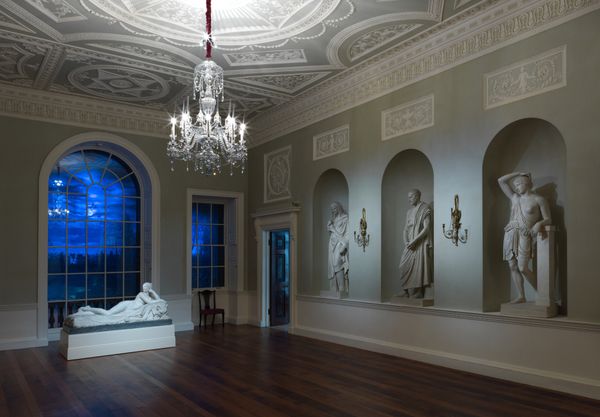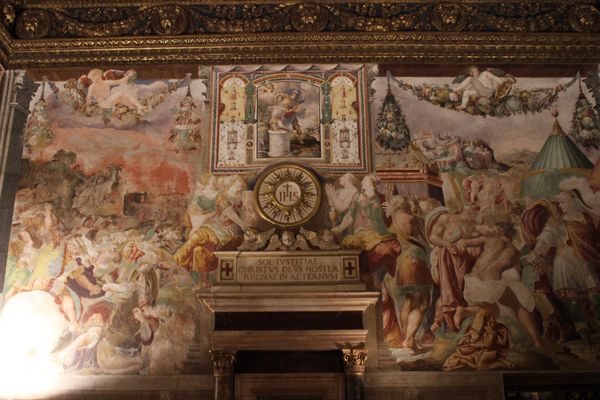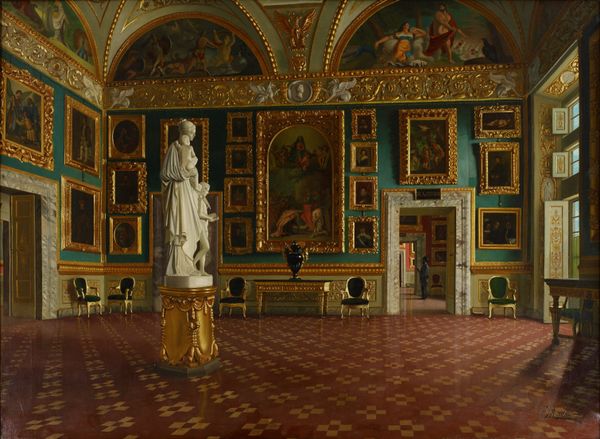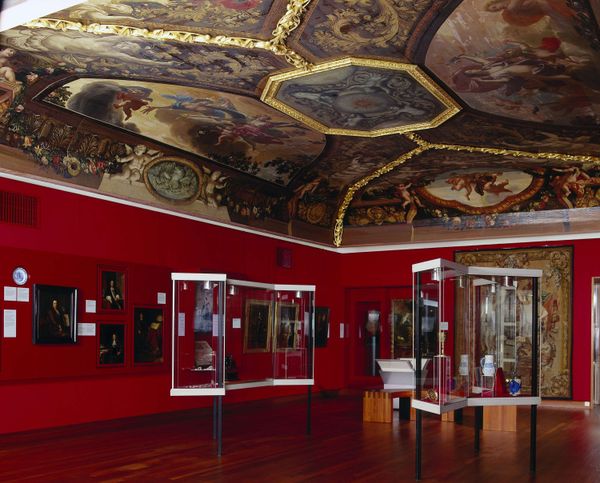
sculpture, architecture
#
portrait
#
sculpture
#
landscape
#
historic architecture
#
11_renaissance
#
traditional architecture
#
classicism
#
sculpture
#
italian-renaissance
#
architecture
#
historical building
Copyright: Public domain
Editor: This is a photograph of the Teatro Olimpico in Vicenza, constructed around 1580 by Andrea Palladio. The architecture is overwhelmingly, and almost oppressively, white, with tier upon tier of sculptures. The perspective created by the receding columns and stage openings is really striking. What aspects of its form do you find most compelling? Curator: The meticulous application of classical forms is central. Note the rigorous deployment of columns, pilasters, and entablatures. Palladio wasn't merely copying classical elements; he was rigorously studying their proportions and relationships to achieve a sense of idealized harmony and order. Observe the articulation of space. The theater embodies geometric principles – consider the semi-circular orchestra pit and the calculated recession of the stage set, creating an illusion of depth within a confined space. Do you see how each plane and form interlocks? Editor: Yes, it's like he’s creating a world within a world. But what about the almost obsessive repetition of classical motifs? Does that repetition itself have significance beyond just aesthetic pleasure? Curator: Repetition, in this context, transcends mere aesthetic pleasure. It amplifies the sense of order and control that are hallmarks of classicism. Think of it as a visual echo, reinforcing the foundational principles upon which the theater is built. Also note the textural contrast between the smooth surfaces of the columns and the more ornate sculptural details. This contrast creates visual interest. Editor: I see that the constant reiteration of form enhances this effect by subtly layering detail to achieve that effect. I also notice how little color there is other than that deep red. Curator: Precisely! And what does that absence contribute? It directs the eye to focus solely on line, shape, and form. Color would detract from the architecture, its structure. Editor: Right! Looking closely, it all feels incredibly considered now, a deliberate system rather than arbitrary choices of adornment. Curator: Yes! In that regard, Palladio achieves nothing less than complete refinement.
Comments
No comments
Be the first to comment and join the conversation on the ultimate creative platform.
